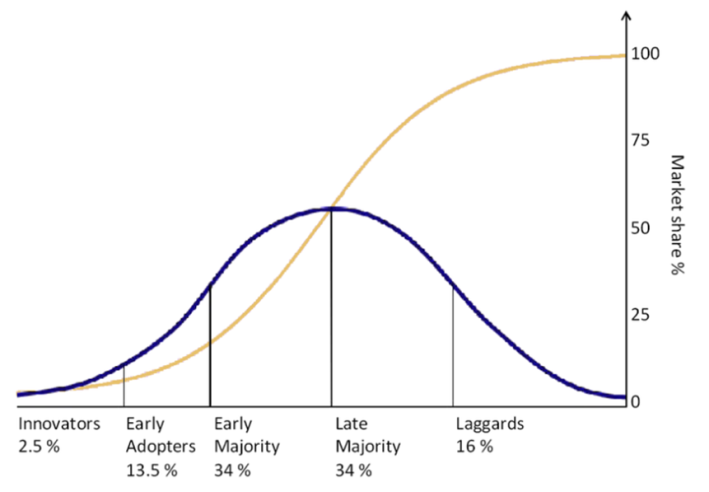Don’t Be Late
The Diffusion of Innovation
In a previous blog, we wrote about a conceptual framework introduced by Everett Rogers in 1962. The framework and the terms are familiar to all of us. “Innovators”, “Early Adopters”, “Laggards.” Based on recent research, it appears that we are in the “Early Majority” phase when it comes to AP Automation.
Characteristics of the Early Majority

Professor Rogers summarized the characteristics of the Early Majority as follows: “They adopt an innovation after a varying degree of time that is significantly longer than the innovators and early adopters. Early Majority have above average social status, contact with early adopters and seldom hold positions of opinion leadership in a system.”
I suspect the early majority has been dealing with other priorities, and is now coming around to AP Automation as part of a broader digital transformation agenda. The timing is good. AP automation has improved significantly from the early days. Expensive, perpetual license solutions have given way to cloud-based services that are priced on a per-invoice basis. Embedded analytic applications complement the transactional nature of AP automation, and the ability to review and approve invoices on a mobile device is required functionality.
The Penalty for Being Late
Everett wasn’t kind when it came to describing the last two categories. The late majority “adopts an innovation after the average participant. These individuals approach an innovation with a high degree of skepticism and after the majority of society has adopted the innovation. Late Majority are typically skeptical about an innovation, have below average social status, little financial liquidity, in contact with others in late majority and early majority and little opinion leadership.”
His father, a farmer in Ohio, only adopted hybrid seed after a drought killed off his crop of corn in 1936. He was a laggard of the worst sort. Laggards “are the last to adopt an innovation. Unlike some of the previous categories, individuals in this category show little to no opinion leadership. These individuals typically have an aversion to change-agents. Laggards typically tend to be focused on “traditions”, lowest social status, lowest financial liquidity, oldest among adopters, and in contact with only family and close friends.” It’s unclear whether Everett and his father were still on speaking terms after this criticism.
Start Now
The majority of senior finance leaders believe their accounts payable process is automated. It’s not. The reality is that 60% of companies have no AP automation whatsoever. Join the early majority and make AP automation a priority in 2024.
Related Articles
